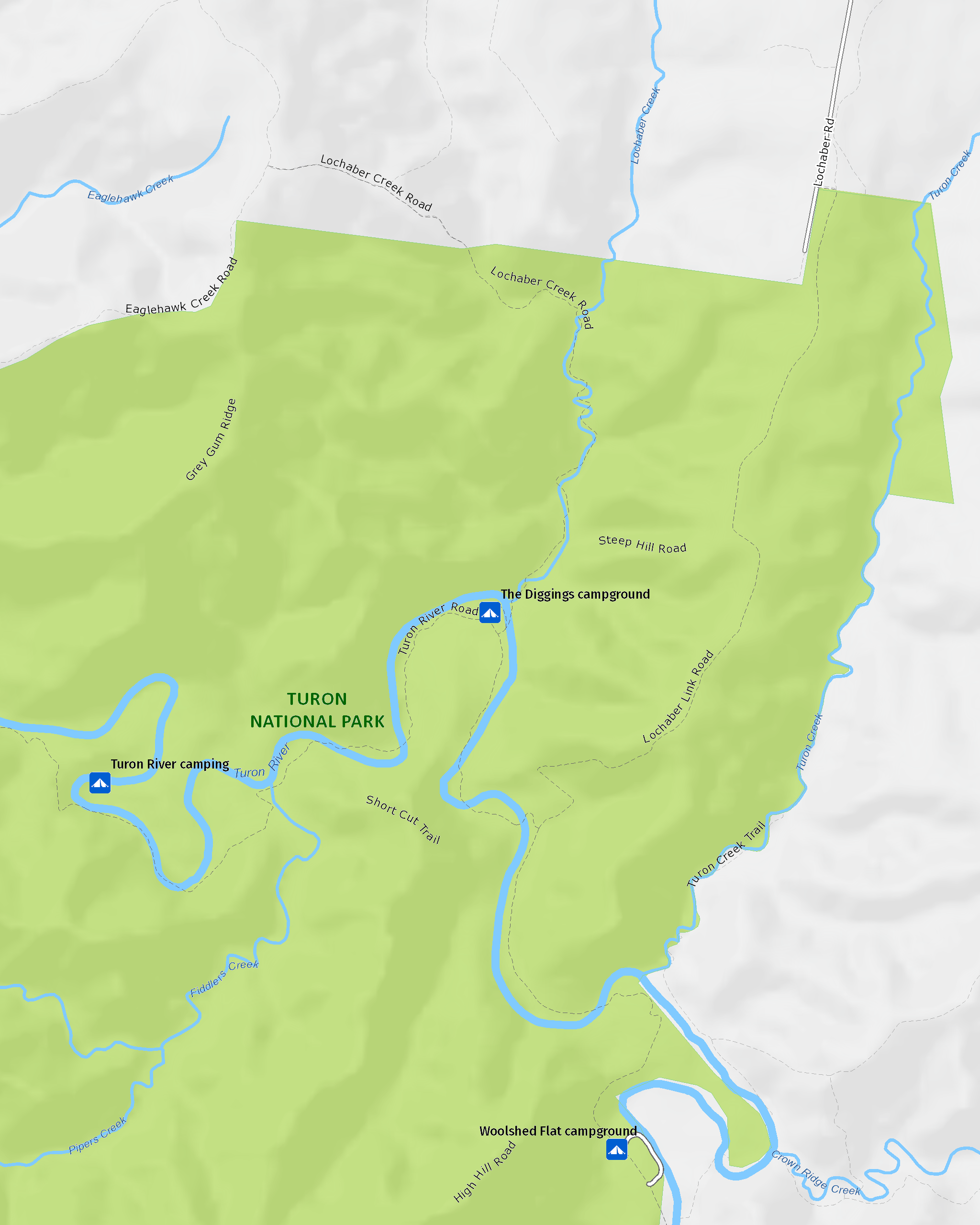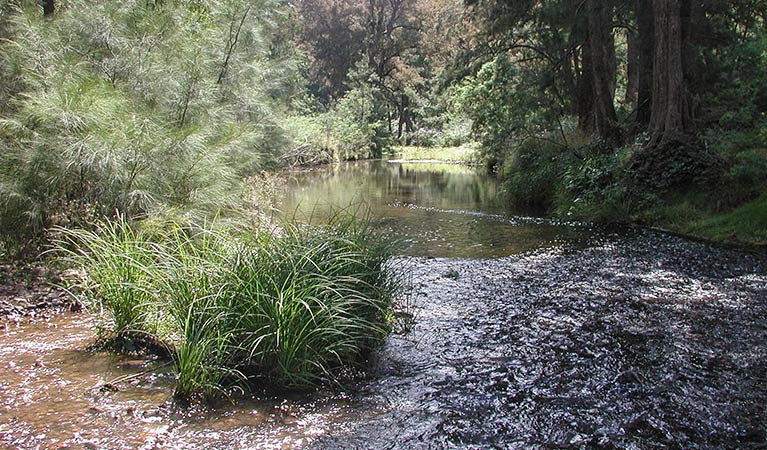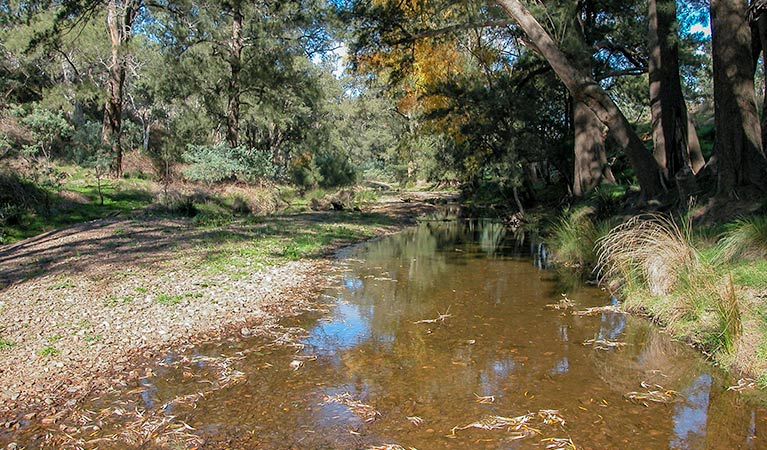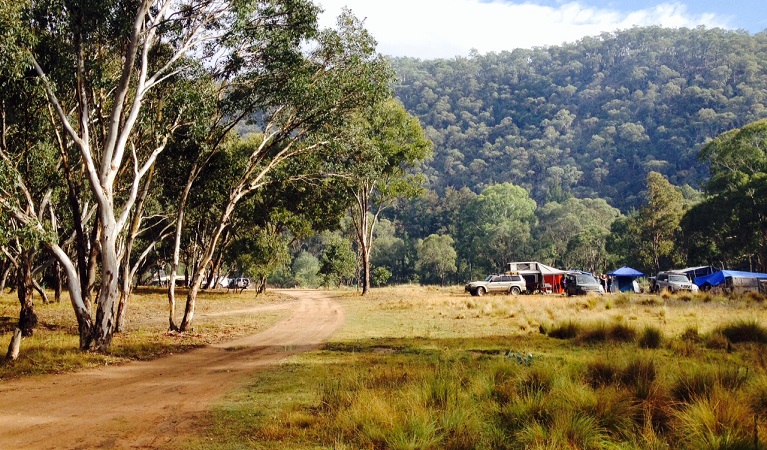The Diggings campground
Turon National Park
Overview
The Diggings campground is a great spot to explore all that Turon National Park has to offer – bushwalking and camping, mountain biking, trout fishing, canoeing and 4WD touring.
| Number of campsites | 20 |
|---|---|
| Camping type | Tent, Camper trailer site, Camping beside my vehicle |
| Facilities | Barbecue facilities, toilets |
| What to bring | Firewood |
| Price | There are no camping fees at this campground but a $6 booking fee applies. |
| Group bookings | Book up to 40 people or 9 sites online. For larger groups, make a group booking enquiry. |
| Please note |
|
This peaceful campground at the mouth of Turon River is very popular with 4WD enthusiasts, as you’ll need a bit of 4WD skill and savvy to access it.
Being located right on the river, it’s also great for those who want to enjoy trout fishing or canoeing or just paddling in the water when the weather is hot.
The grassy flats of riverbank are lined with she-oak, and you’re likely to spot kangaroos and wombats hopping around here at dawn and dusk. You’ll also see plenty of evidence of the early pioneers’ mining activities, which once thrived in the area.
Map

Map legend

Local alerts
For the latest updates on fires, closures and other alerts in this area, see https://uat.nswparks.cloud/camping-and-accommodation/campgrounds/the-diggings-campground/local-alerts
Bookings
- National Parks Contact Centre
- 7am to 7pm daily
- 1300 072 757 (13000 PARKS) for the cost of a local call within Australia excluding mobiles
- parks.info@environment.nsw.gov.au
Operated by
- Oberon office
- Monday to Friday, 9am to 4.30pm.
- 02 6336 6200
- npws.kanangra@environment.nsw.gov.au
- 38 Ross Street, Oberon NSW 2787
Park info
- in Turon National Park in the Sydney and surrounds region
Turon National Park is always open but may have to close at times due to poor weather or fire danger.
Visitor info
All the practical information you need to know about The Diggings campground.
Maps and downloads
Learn more
The Diggings campground is in Turon National Park. Here are just some of the reasons why this park is special:
A prosperous gold mining area

In 1851, a delighted Aboriginal prospector found a large gold nugget in the Turon River. Subsequent valuable finds led to the development of the nearby town of Sofala during a gold mining boom. The park area has now been extensively mined for gold and many relics of this activity are still visible along the river’s banks. The park’s historic gold diggings hold local, regional and state significance and are on the NSW State Heritage Register.
Dramatic geological activity

Central west NSW has had an eventful geological history and the landscape of the area still bears striking reminders of these events, from gold mining remnants to volcanic activity. The gold extracted in the Turon area was alluvial, having washed down over millions of years, to be deposited in the gravels and silts of the creeks and streams.
Important cultural history

Turon National Park is Wiradjuri Aboriginal country and is home to many sacred sites that bear witness to the land’s earliest occupiers. Archaeological surveys from recent times have revealed evidence of extensive Aboriginal occupation prior to European arrival in the area. Therefore, the park plays an important role in conserving evidence of traditional, historical and contemporary land use and is of cultural significance to the Wiradjuri people, as well as descendents of early settlers of European and Chinese heritage.
Riverine oak forest communities

Turon National Park protects regionally important stands of fringing riverine oak forest communities along Turon River. With an abundance of plant life, you can also find snow gum and ribbon gum woodlands in the area. If you're seeking an adventure, then explore the park and head to the relatively undisturbed ranges throughout the park, which are filled with eucalypt communities.

